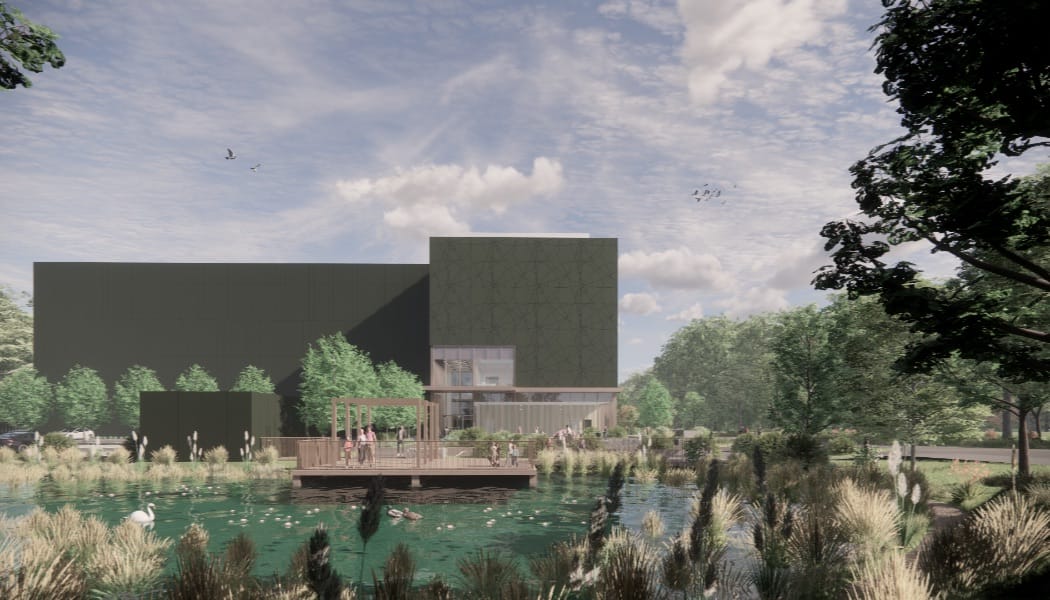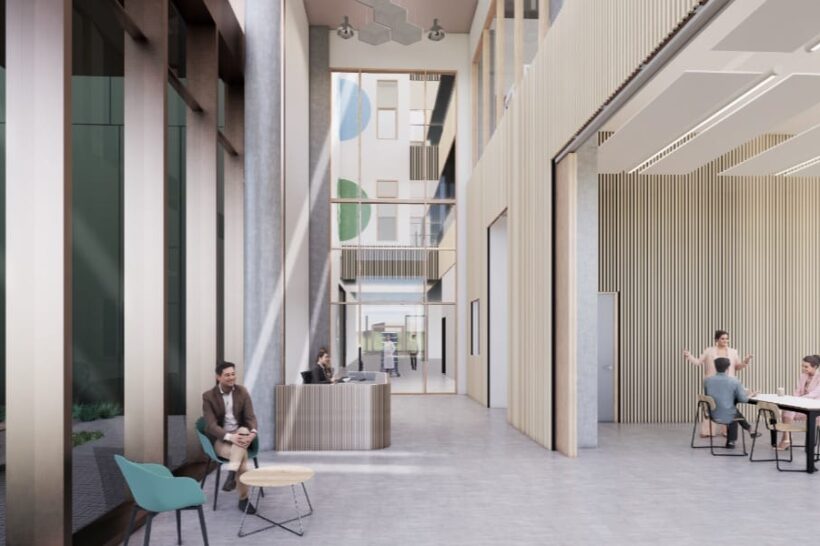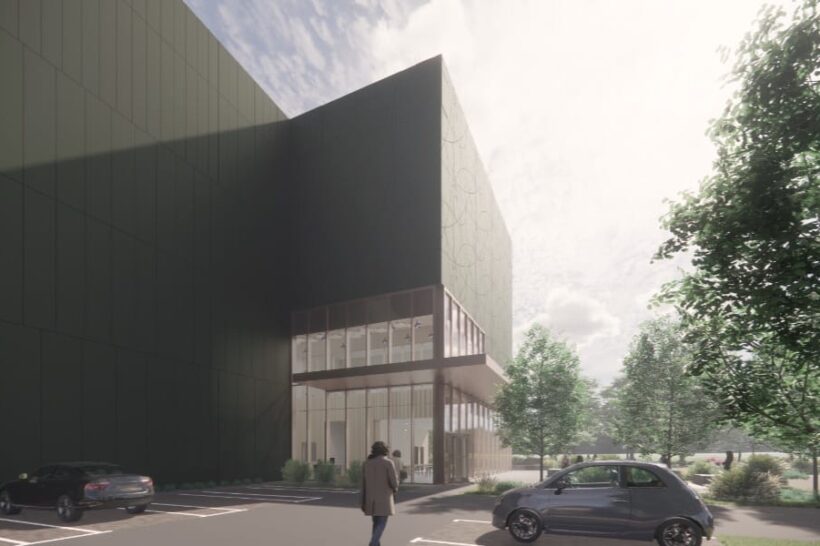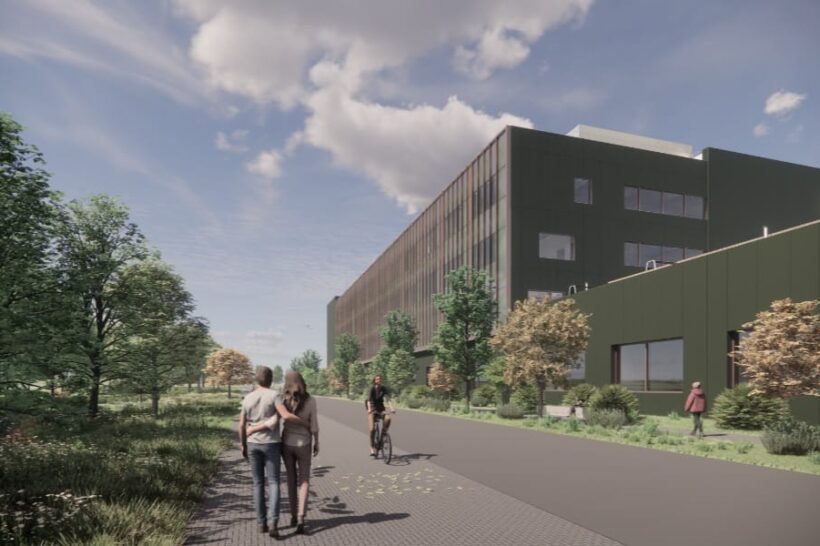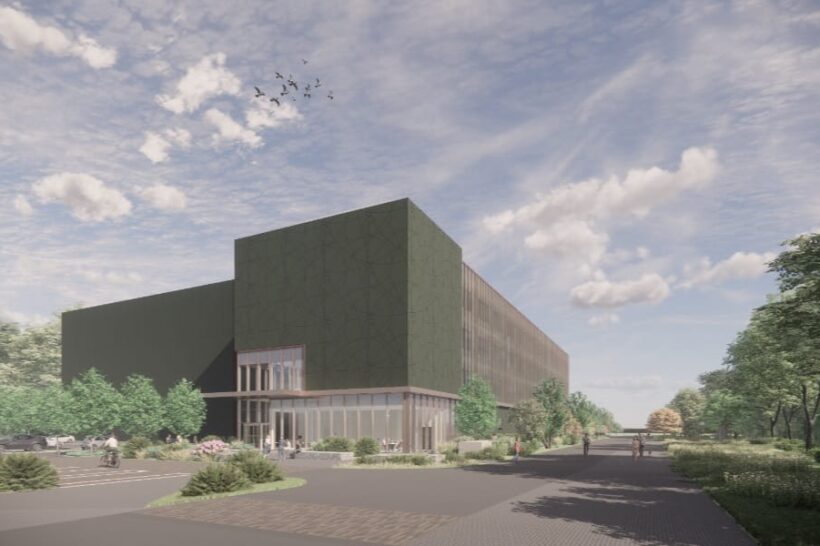Alistair Hardaker
Image: View across natural pond towards main entrance Feilden Clegg Bradley Studios architects, courtesy of NHM
£201m government-backed facility at Thames Valley Science Park will enable reopening of two South Kensington galleries closed since 1948 and 2004.
Construction has today begun on the Natural History Museum’s collections, research and digitisation centre in Wokingham, which will house 28 million specimens.
The facility will span the equivalent of three football pitches, totalling 25,000m2. With ground broken today, construction is expected to be finished in 2027 and operational by 2031.
Located at Thames Valley Science Park in Shinfield, the campus of the University of Reading, this new facility will house purpose-built storage for 28 million specimens, around a third of the Museum’s collection.
Also acting as a research hub, it will provide digital, analytical, and genomic technologies and facilities for the scientific community.
The museum’s collections of mammals, non-insect invertebrates (such as corals, crustaceans, molluscs, and worms), fossilised mammals and invertebrates, molecular collections, and micropalaeontology will be housed at the new centre in bespoke storage.
Once filled, the new centre will create more space at The Natural History Museum’s South Kensington site. Two long-closed galleries – one closed in 2004 and the other in 1948 – will be reopened.
The museum said transporting a third of its collections to Shinfield will be one of the largest moves of natural history specimens globally.
The facility will feature an imaging and analysis centre, including digitisation suites; molecular biology laboratories, including ancient DNA labs; cryo-facilities for tissue storage; conservation labs; and specimen preparation labs, including quarantine facilities.
The museum’s director Dr Doug Gurr said once opened, the facility could help the scientific community to protect and restore critical habitats, find critical minerals to support the energy transition, and “ could even prove pivotal in preventing the next global pandemic.”
The project is part of the NHM Unlocked Programme, backed by a £201m investment from the UK Government as part of its efforts to increase investment in science, research and development.

